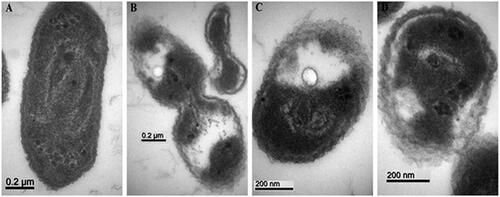Figures & data
Table 1. Phytochemical screening of olive leaves (Olea europaea), chamomile flower (Matricaria chamomilla L.) and red tomato fruit (Lycopersicon esculentum M.) extracts.
Figure 1. Schematic presentation of zinc oxide nanoparticles synthesis (A1) Olive leaves (Olea europaea) (A2) Chamomile flower (Matricaria chamomilla L.) (A3) Red tomato fruit (Lycopersicon esculentum M.) (B1) Filtered aqueous olive leaves (Olea europaea) (B2) Filtered aqueous chamomile flower (Matricaria chamomilla L.) (B3) Filtered aqueous red tomato fruit (Lycopersicon esculentum M.) (C) Zinc oxide solution (B1C) Synthesized ZnONPs by olive leaves (Olea europaea) (B2C) Synthesized ZnONPs by chamomile flower (Matricaria chamomilla L.) (B3C) Synthesized ZnONPs by red tomato fruit (Lycopersicon esculentum M.) (D1) Dried ZnONPs synthesized by olive leaves (Olea europaea) (D2) Dried ZnONPs synthesized by chamomile flower (Matricaria chamomilla L.) D3) Dried ZnONPs synthesized by red tomato fruit (Lycopersicon esculentum M.).
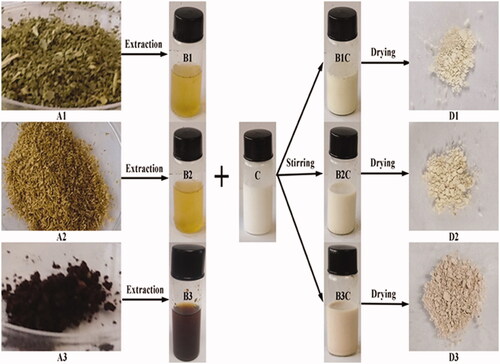
Figure 2. UV–Vis spectra of (A) zinc oxide nanoparticles synthesized by olive leaves (Olea europaea) (B) zinc oxide nanoparticles synthesized by chamomile flower (Matricaria chamomilla L.) (C) zinc oxide nanoparticles synthesized by red tomato fruit (Lycopersicon esculentum M.).
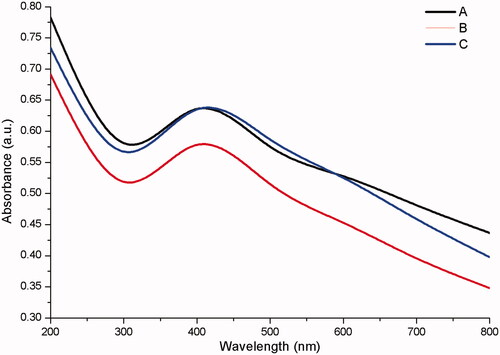
Figure 3. Fourier transform infrared spectra of ZnONPs synthesized by (A) Olive leaves (Olea europaea) (B) Chamomile flower (Matricaria chamomilla L.) (C) Red tomato fruit (Lycopersicon esculentum M.).
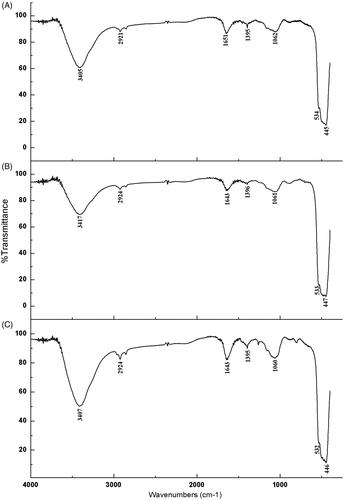
Figure 4. Transmission electron micrographs of synthesized zinc oxide nanoparticles synthesized by (A) Olive leaves (Olea europaea) (B) Chamomile flower (Matricaria chamomilla L.) (C) Red tomato fruit (Lycopersicon esculentum M.). Magnification 5000×, Bar = 5 µm and the size distribution of particles in TEM images of zinc oxide nanoparticles synthesized by (D) Olive leaves (Olea europaea) (E) Chamomile flower (Matricaria chamomilla L.) (F) Red tomato fruit (Lycopersicon esculentum M.).
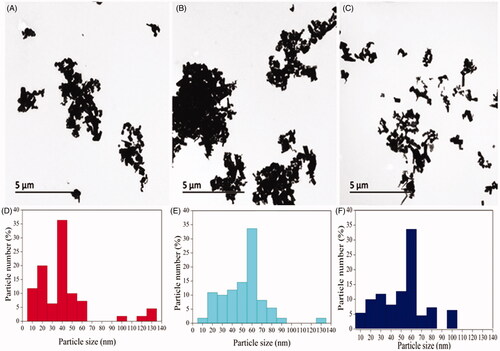
Figure 5. SEM images of the synthesized zinc oxide nanoparticles synthesized using (A, B) Olive leaves (Olea europaea) (C, D) Chamomile flower (Matricaria chamomilla L.) (E, F) Red tomato fruit (Lycopersicon esculentum M.).
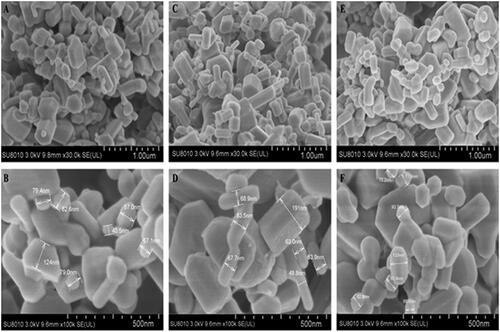
Figure 6. EDS profile of zinc oxide nanoparticles synthesized by (A, B) Olive leaves (Olea europaea) (C, D) Chamomile flower (Matricaria chamomilla L.) (E, F) Red tomato fruit (Lycopersicon esculentum M.).
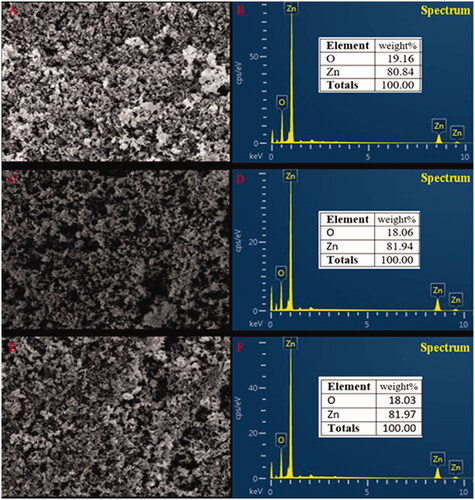
Figure 7. XRD spectra of synthesized zinc oxide nanoparticles using (A) Olive leaves (Olea europaea) (B) Chamomile flower (Matricaria chamomilla L.) (C) Red tomato fruit (Lycopersicon esculentum M.).
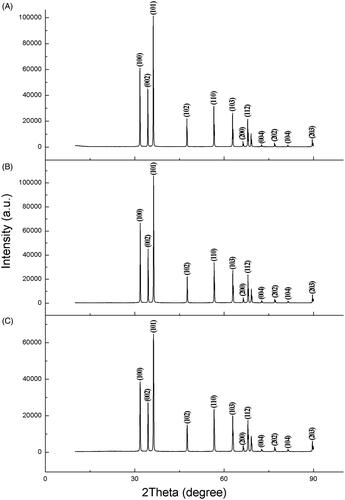
Figure 8. Antibacterial activity of zinc oxide nanoparticles against strain GZ 0003 of Xanthomonas oryzae pv. oryzae. Plates are showing inhibition zones on strain GZ 0003 of Xanthomonas oryzae pv. oryzae caused by zinc oxide nanoparticles *Zn + 1 zinc oxide nanoparticles synthesized by olive leaves (Olea europaea) Zn + 4 zinc oxide nanoparticles synthesized by chamomile flower (Matricaria chamomilla L.) Zn + 16 zinc oxide nanoparticles synthesized by red tomato fruit (Lycopersicon esculentum M.). *Values are a mean ± standard error of three replicates and bars with the same letters are not significantly different in LSD test (p < .05).
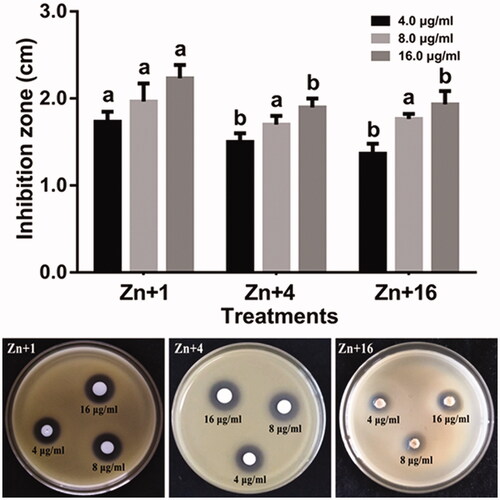
Figure 9. (A) Effect of zinc oxide nanoparticles on the growth of strain GZ 0003 of Xanthomonas oryzae pv. oryzae. (B) Percentage viable cell of strain GZ 0003 of Xanthomonas oryzae pv. oryzae after treatment with zinc oxide nanoparticles *Zn + 1 zinc oxide nanoparticles synthesized by olive leaves (Olea europaea) Zn + 4 zinc oxide nanoparticles synthesized by chamomile flower (Matricaria chamomilla L.) Zn + 16 zinc oxide nanoparticles synthesized by red tomato fruit (Lycopersicon esculentum M.). *Values are a mean ± standard error of three replicates and bars with the same letters are not significantly different in LSD test (p < .05).
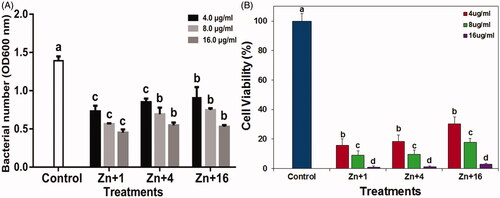
Figure 10. Effect of synthesized zinc oxide nanoparticles on biofilm formation of strain GZ 0003 of Xanthomonas oryzae pv. oryzae. *Zn + 1 zinc oxide nanoparticles synthesized by olive leaves (Olea europaea) Zn + 4 zinc oxide nanoparticles synthesized by chamomile flower (Matricaria chamomilla L.) Zn + 16 zinc oxide nanoparticles synthesized by red tomato fruit (Lycopersicon esculentum M). *Values are a mean ± standard error of three replicates and bars with the same letters are not significantly different in LSD test (p < .05).
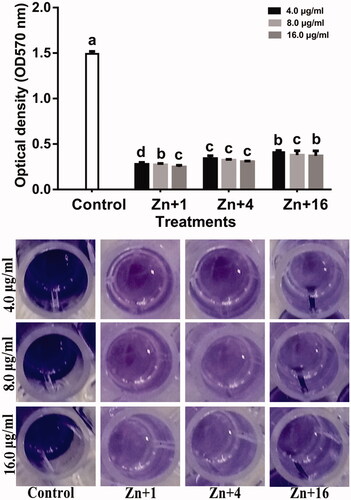
Figure 11. Effect of zinc oxide nanoparticles on the swimming motility of strain GZ 0003 of Xanthomonas oryzae pv. oryzae. *Zn + 1 zinc oxide nanoparticles synthesized by olive leaves (Olea europaea) Zn + 4 zinc oxide nanoparticles synthesized by chamomile flower (Matricaria chamomilla L.) Zn + 16 zinc oxide nanoparticles synthesized by red tomato fruit (Lycopersicon esculentum M). *Values are a mean ± standard error of three replicates and bars with the same letters are not significantly different in LSD test (p < .05).
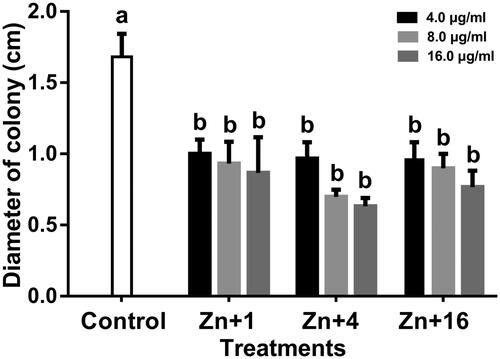
Figure 12. TEM images of strain GZ 0003 of Xanthomonas oryzae pv. oryzae (A) treated with double distilled water, and treatment with 8 µg/ml of zinc oxide nanoparticles synthesized by (B) Olive leaves (Olea europaea) (C) Chamomile flower (Matricaria chamomilla L.), (D) Red tomato fruit (Lycopersicon esculentum M). Magnification 100,000× for A and B; 150,000× for C and D; Bar = 0.2 µm for A and B; 200 nm for C and D.
